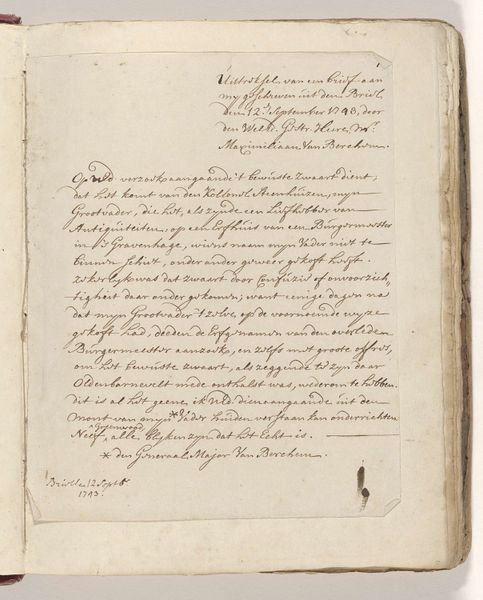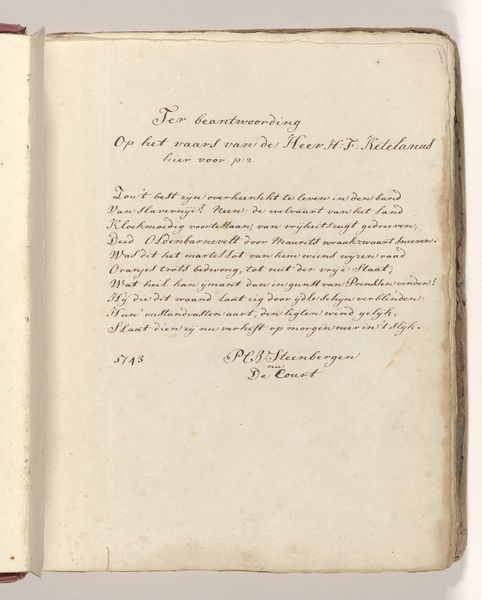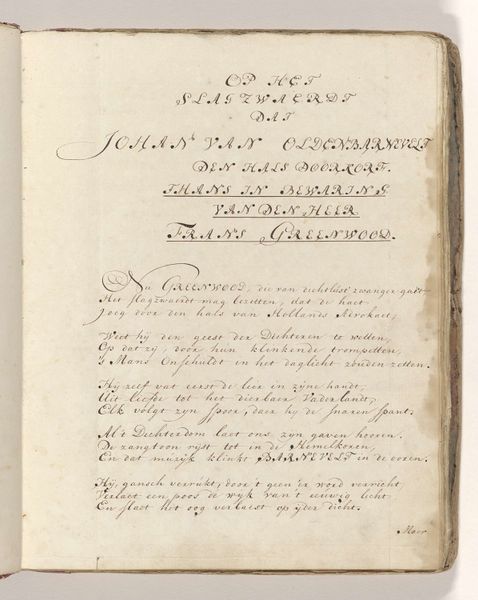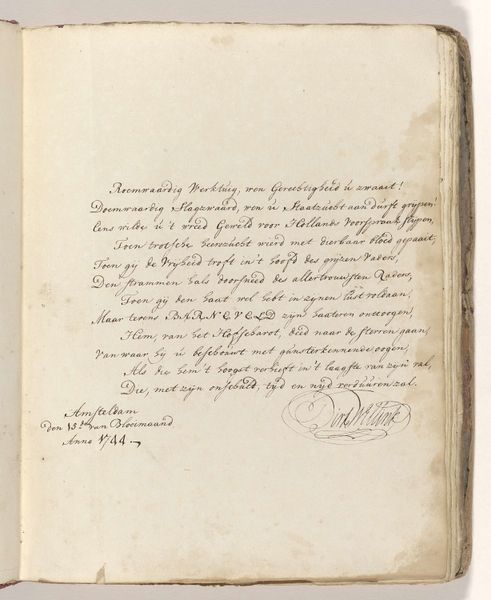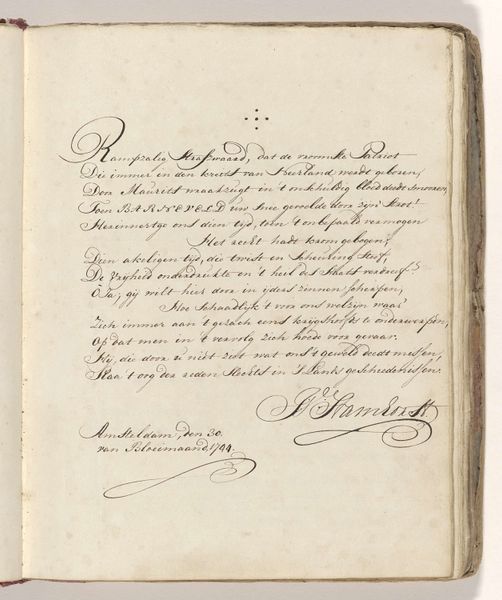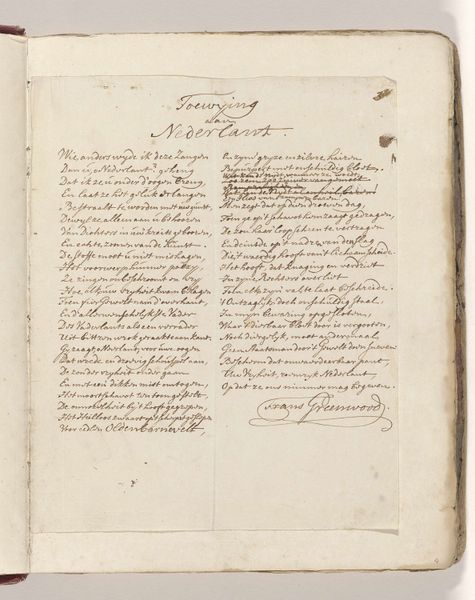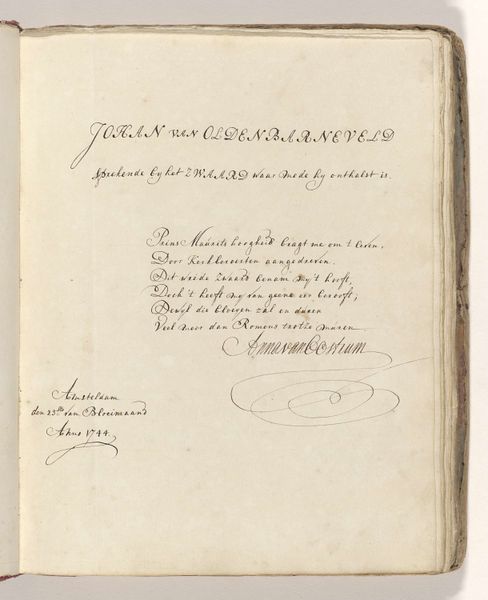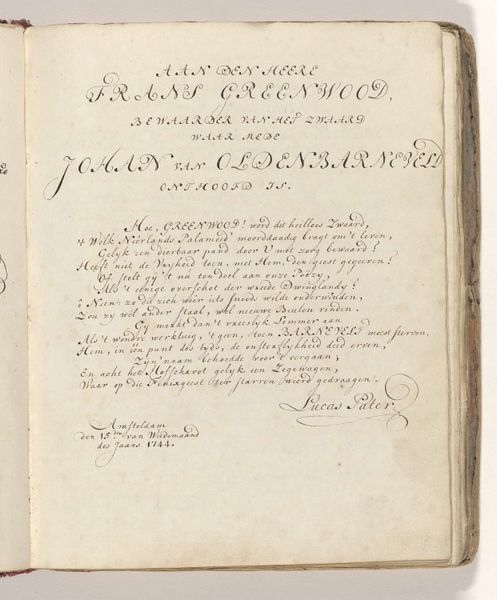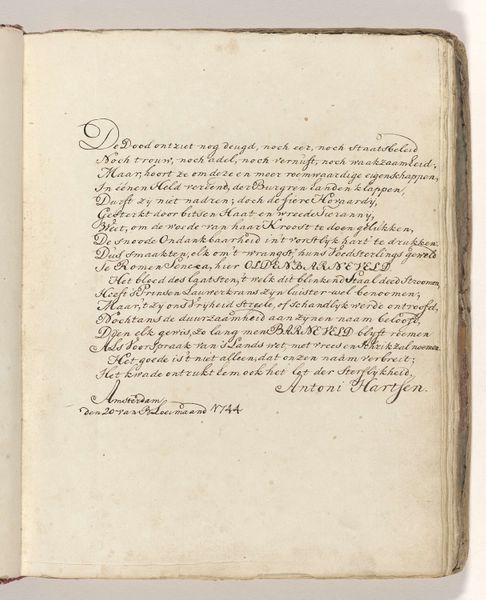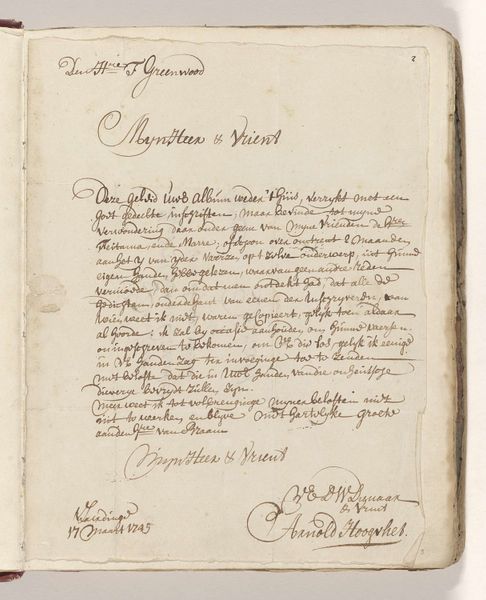
Gedicht op het zwaard waarmee Johan van Oldenbarnevelt in 1619 zou zijn onthoofd Possibly 1744 - 1746
0:00
0:00
drawing, paper, ink
#
portrait
#
drawing
#
paper
#
ink
#
calligraphy
Dimensions: height 275 mm, width 220 mm
Copyright: Rijks Museum: Open Domain
Editor: Here we have "Gedicht op het zwaard waarmee Johan van Oldenbarnevelt in 1619 zou zijn onthoofd", which roughly translates to "Poem on the sword with which Johan van Oldenbarnevelt was beheaded in 1619," created sometime between 1744 and 1746 by Adriaan Jacobszoon van Ommering. It's an ink drawing on paper, almost like a calligraphic portrait made entirely of text. It has a very somber feel to it, naturally. What strikes you most about this piece? Curator: For me, this work powerfully underscores the tangible connection between an object – the sword – and its symbolic weight. It's not just about the finished drawing, but about the materials used: the ink, the paper, the calligraphic hand itself. Consider the labour involved in its creation, the act of transcription imbued with memory and perhaps even protest. It challenges the separation between art and craft, memorial and material. Does this perspective resonate with you? Editor: Absolutely. I was initially just thinking about the imagery it evokes, but framing it as a material object tied to a specific, traumatic historical event definitely shifts the focus. It feels less like a detached observation and more like a… recording. Curator: Exactly. The deliberate choice of materials and the very act of painstakingly writing out this poem transforms it from a simple text into a powerful artifact, almost a relic. It highlights how materiality itself can become a vehicle for meaning and social commentary, disrupting typical distinctions between mere record and artistic creation. Does understanding the method, the labor, of its production impact your appreciation? Editor: It really does. I now see the care taken in its execution, and appreciate how Ommering transforms a grim historical detail into a thoughtful meditation. Curator: Precisely. It brings forward questions of authorship and intention in that its physical form mirrors the social context. It's in those small, physical processes where greater cultural statements may resonate.
Comments
No comments
Be the first to comment and join the conversation on the ultimate creative platform.

